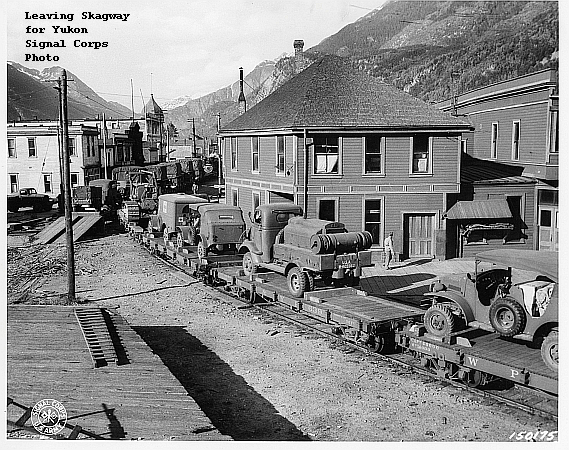
Highballing it at 60 below headlined an article in the November 27, 1943 issue of The Saturday Evening Post. Captain Richard L. Neuberger who wrote it had watched the 770th Railway Operating Battalion struggle to shove enough men and freight up and over White Pass to build Alaska Highway through Yukon. In truth they didn’t do much highballing.
Neuberger described what he saw in his Post article and the words that follow are his.
Link to Another Story “Russell Wesley on the WP& YR”
“…with the thermometer on the station platform at Whitehorse registering sixty-eight degrees below zero and the snow piled forty feet deep on the uplands at Fraser Loop, they scoffed no more. They had been sure that the aggregate of their careers included all there could be possibly to railroading. Now they knew what the old-timers and sourdoughs had meant who told them they were up against ‘the toughest 110 miles of track in the world.’…

“Up out of Skagway the White Pass and Yukon ascends 2900 feet in nineteen miles. Much of the grade is 4 per cent. The lead engine of a train is frequently thirty feet higher on the mountain wall than the caboose. Curves are so sharp that trains rounding them are curled up like a cowpuncher’s lariat. Overhanging precipices frown down on the thiry-six-inch tracks, and below the ties the cliff falls away 1200 sheer feet to the turbulent waters of the Skagway River. The railroad follows the heartbreaking trail of the ‘98ers over White Pass, a trail beset by blizzards, avalanches and incredible temperatures…

“When White Pass trains stopped to take on water, the locomotive wheels froze to the rails. Often they were not broken loose until another engine was summoned by wire to give the train a shattering bump. In the yards at Skagway, Whitehorse and Carcross—which Jack London shortened from Caribou Crossing—engines were moved every ten minutes to keep them from freezing to the track. Drifting, wind-blown snow plugged the line at innumerable points. Indians on snowshoes risked their lives to bring emergency rations to passengers in stalled trains.”
Thank you for another very interesting chapter
You are entirelybwelcome